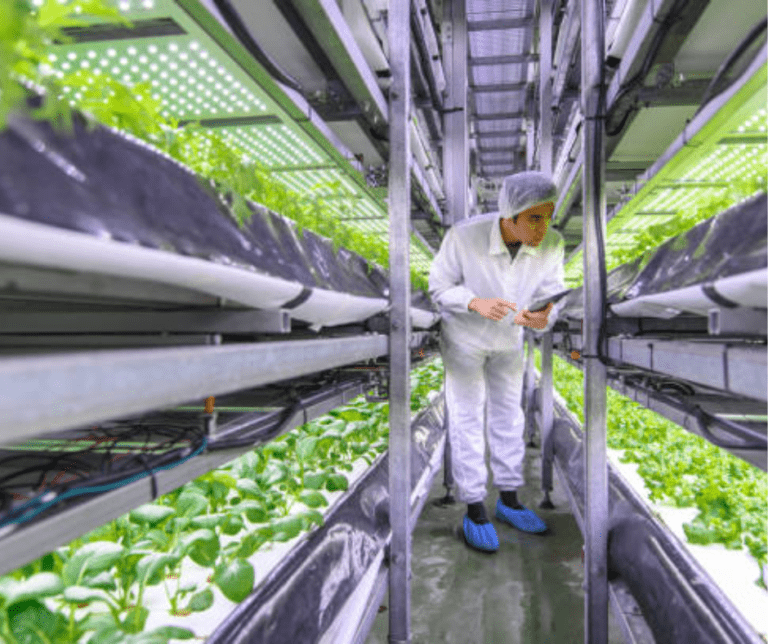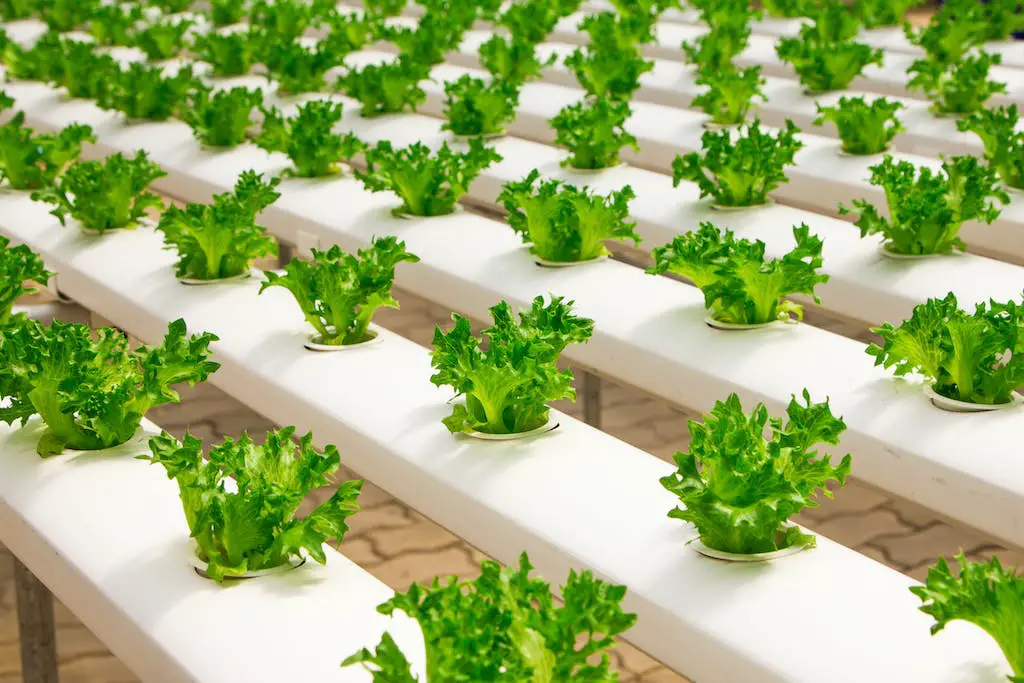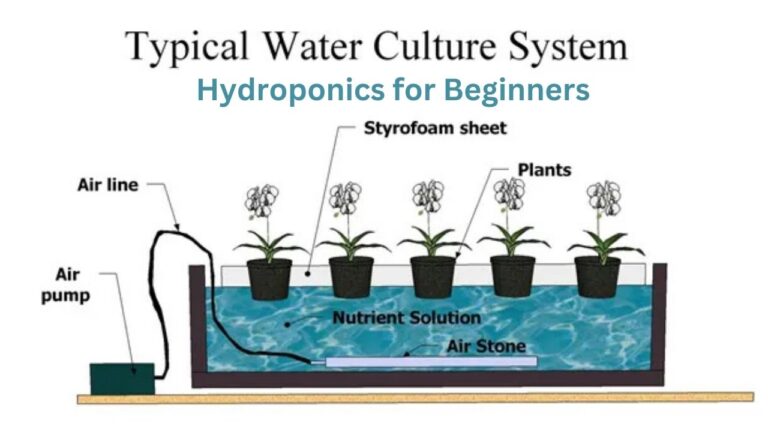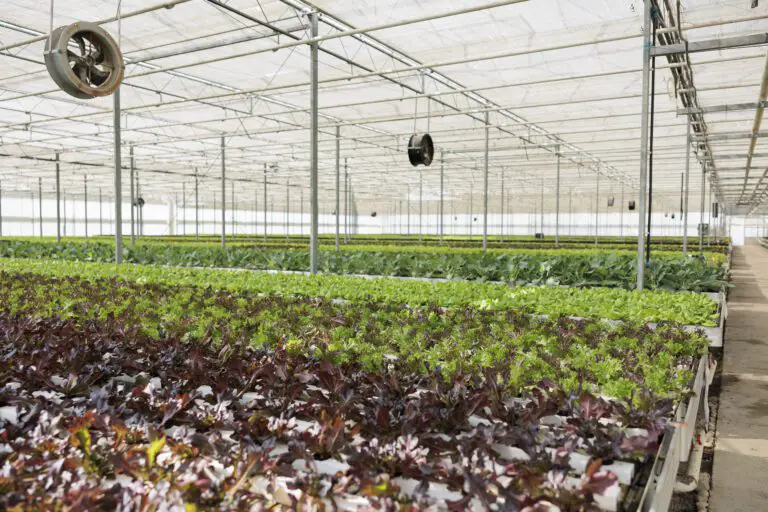Hydroponics for Beginners: A Comprehensive Guide
Table of Contents
2. Benefits of Hydroponic Systems
Hydroponic systems offer a wide range of benefits that make them an attractive option for gardening enthusiasts. One of the key advantages is that hydroponics allows plants to grow in a soil-less environment, eliminating the need for traditional gardening methods. This means that individuals can embrace hydroponics even if they have limited access to arable land or live in urban areas where space is a premium.
Furthermore, hydroponic systems have been proven to be highly efficient in water usage. Compared to traditional soil-based gardening, hydroponics can reduce water usage by up to 90%. This is achieved through a closed-loop system where water is continuously recirculated and reused, resulting in minimal wastage. With growing concerns about water scarcity, this aspect of hydroponics offers a sustainable and responsible way to cultivate plants. Additionally, the controlled environment of hydroponics enables plants to receive optimal nutrition, light, and temperature, leading to faster growth rates, higher yields, and healthier plants.
Overall, the benefits of hydroponic systems are substantial. Not only do they offer a practical solution for space-constrained environments, but they also conserve water resources and maximize plant growth potential. As gardening enthusiasts continue to explore the possibilities of hydroponics, it is evident that this innovative approach to cultivation has the potential to transform the way we grow plants and meet the demands of an increasingly urbanized world.
3. Exploring Different Hydroponic Techniques
Hydroponics, the practice of growing plants without soil, offers a wide range of techniques that can be customized to suit individual gardening needs. One popular method is the Nutrient Film Technique (NFT), where a thin film of nutrient solution continuously flows over the plant roots, providing them with the necessary water and nutrients. This technique maximizes oxygen availability to the roots, promoting healthy growth. Another technique, known as Deep Water Culture (DWC), involves suspending the plant roots in a nutrient-rich solution, with an air stone providing the necessary oxygenation. DWC is easy to set up and is often used for growing leafy greens and herbs.
Another popular hydroponic technique is the Ebb and Flow system, also known as Flood and Drain, where plants are periodically flooded with nutrient solution and then allowed to drain. This process mimics the natural cycle of wet and dry conditions experienced by plants in soil, promoting healthy root growth and nutrient uptake. The Wick System, on the other hand, is a passive hydroponic technique that uses a wick to draw nutrient solution from a reservoir to the plant roots. This simple and low-maintenance method is ideal for beginners or those with limited space.
As hydroponic systems continue to evolve, new techniques are constantly being developed. From the versatile and scalable Aeroponics system, which suspends plant roots in air and mists them with nutrient solution, to the innovative Vertical Farming, where plants are stacked on multiple levels to maximize the use of space, the possibilities are endless. Each technique offers its own advantages and challenges, allowing gardeners to experiment and find the best fit for their specific needs. With the right technique and a little knowledge, anyone can enjoy the benefits of hydroponic gardening in their own home.
4. Selecting the Right Hydroponic System for Beginners
When it comes to selecting the right hydroponic system for beginners, there are several factors to consider. One important factor is the available space. If you have limited space, a compact system like a vertical tower or a countertop system may be a good choice. These systems are designed to maximize growing area while minimizing the footprint.
Another factor to consider is the level of automation you prefer. Some hydroponic systems are more hands-on, requiring regular monitoring and adjustments, while others are fully automated, taking care of tasks like nutrient delivery and pH balancing. For beginners, it may be practical to start with a semi-automated system that allows for learning and hands-on involvement, while still providing some level of automation to simplify the process.
Additionally, the type of plants you want to grow will influence your choice of system. Different hydroponic systems are better suited for specific types of plants. For example, a nutrient film technique (NFT) system is ideal for leafy greens, herbs, and smaller vegetables, while a deep water culture (DWC) system is better suited for larger plants like tomatoes or cucumbers.
Considering these factors will help you select a hydroponic system that fits your space, level of automation preference, and the types of plants you intend to grow. As a beginner, starting with a system that aligns with your needs and interests will set you up for a successful and fulfilling hydroponic gardening experience.
5. Essential Equipment and Supplies for Hydroponics
When setting up a hydroponic system, there are several essential equipment and supplies that you will need to ensure successful plant growth. First and foremost, you will need a suitable container or reservoir to hold your nutrient solution. The container should be made of a lightproof material to prevent the growth of algae and should be able to withstand the weight of the plants and the nutrient solution.
Next, you will need a pump and air stone to provide oxygenation to the nutrient solution. This is crucial for the roots to breathe and thrive in a hydroponic environment. Additionally, a pH meter and a TDS/EC meter are essential tools for monitoring and adjusting the pH and nutrient levels in the solution. These meters will help you maintain optimal growing conditions for your plants.
Other necessary equipment includes grow lights to provide adequate and controlled light intensity, timers to automate the lighting schedule, and a thermometer to monitor the temperature. Additionally, you will need growing trays or containers to support the plants, growing media such as rockwool or perlite, and a nutrient solution formulated specifically for hydroponic gardening.
By ensuring you have the essential equipment and supplies, you are setting yourself up for success in your hydroponic gardening endeavors. These tools will provide the necessary support and control needed to create an ideal environment for your plants to thrive and produce healthy yields.
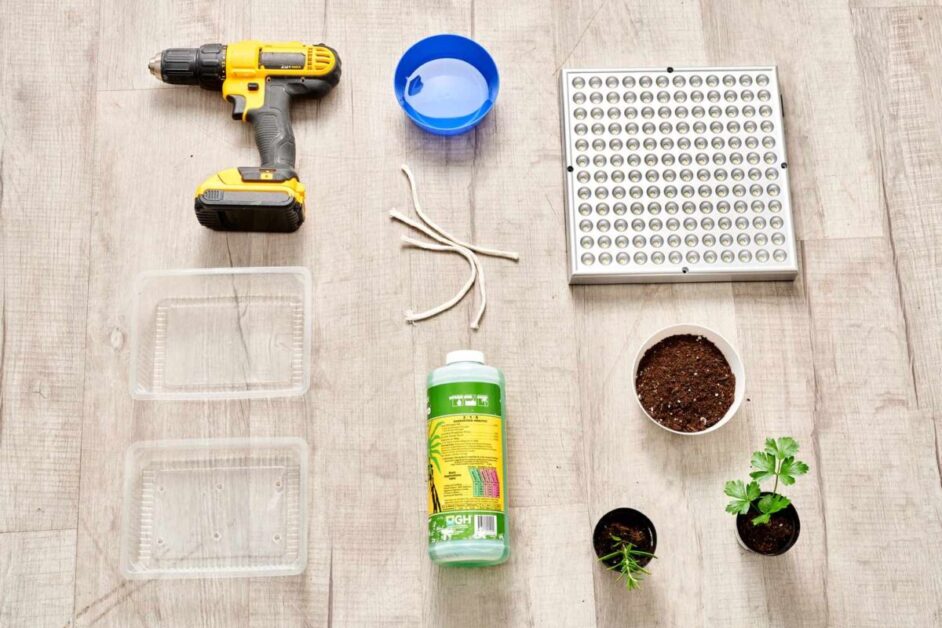
6. Choosing the Perfect Growing Medium for Your Hydroponic Garden
In hydroponics, choosing the right growing medium is crucial for the success of your garden. Unlike traditional soil-based gardening, hydroponics relies on a medium that provides support to the plants while allowing the roots to access water and nutrients. There are various options available, each with its own benefits and considerations.
One popular choice for hydroponic systems is rockwool. Made from spun mineral fibers, rockwool is excellent at retaining moisture while providing good aeration to the roots. Its neutral pH level makes it suitable for a wide range of plants, and it can be easily shaped to fit different growing containers. Another commonly used medium is perlite, a lightweight volcanic rock that helps with water drainage, root oxygenation, and nutrient absorption. Its porous nature also prevents waterlogging, which can lead to root rot. Additionally, coco coir, derived from coconut husks, is becoming increasingly popular due to its eco-friendly nature, water retention capabilities, and ability to retain and release nutrients effectively.
When choosing the perfect growing medium for your hydroponic garden, it is important to consider factors such as the specific needs of your plants, the type of hydroponic system you are using, and the availability and affordability of different mediums. Experimenting with different options and finding what works best for your plants and setup will ultimately lead to optimal growth and yield. Remember to always research and consult with experienced growers to make informed decisions and achieve the best results in your hydroponic endeavors.
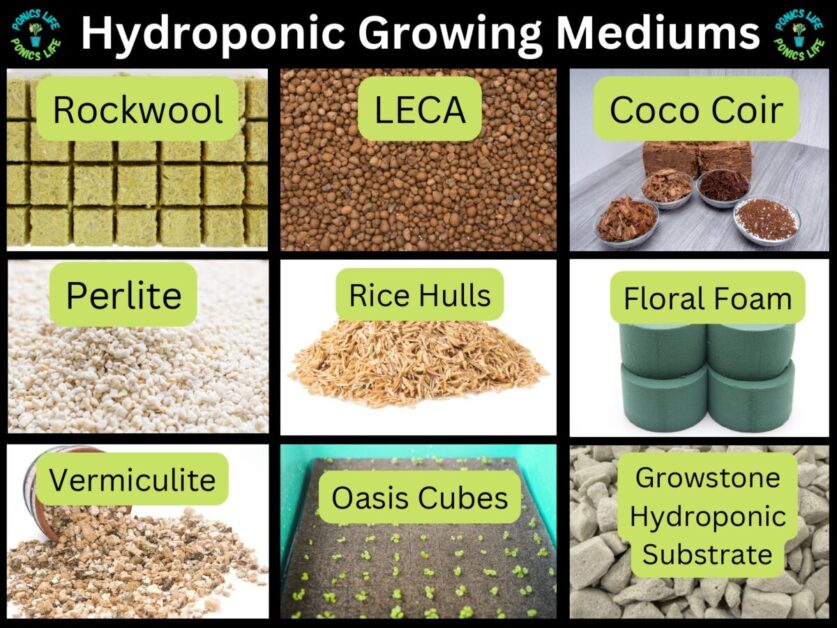
7. The Importance of Nutrient Solutions in Hydroponics
When it comes to hydroponics, the importance of nutrient solutions cannot be overstated. Unlike traditional soil-based gardening, where plants obtain nutrients from the soil, hydroponic systems rely on specially formulated solutions to provide plants with the essential elements they need for healthy growth.
These nutrient solutions are carefully balanced to ensure that plants receive the correct amount of macro and micronutrients. Macronutrients such as nitrogen, phosphorus, and potassium are crucial for plant growth, while micronutrients like iron, zinc, and manganese are required in smaller quantities but are equally important.
The beauty of using nutrient solutions in hydroponics is that they can be customized to meet the specific needs of different plant varieties. By adjusting the concentration of nutrients in the solution, gardeners can provide plants with optimal nutrition for maximum growth and productivity. Additionally, the absence of soil in hydroponic systems eliminates the risk of nutrient deficiencies or imbalances commonly found in traditional gardening, ensuring that plants receive exactly what they need to thrive.
8. Maintaining pH Levels for Healthy Plant Growth
Maintaining the proper pH levels in a hydroponic system is crucial for healthy plant growth and optimal nutrient absorption. pH, or potential hydrogen, refers to the concentration of hydrogen ions in a solution and is measured on a scale from 0 to 14. In hydroponics, maintaining a pH range between 5.5 and 6.5 is generally recommended for most plant species.
The pH level directly affects the availability and uptake of vital nutrients by plants. When the pH level deviates from the optimal range, certain nutrients may become unavailable or toxic to the plants. For example, in alkaline conditions (pH above 7), essential nutrients like iron, manganese, and zinc may become less accessible to plants, leading to deficiencies. On the other hand, acidic conditions (pH below 5) can cause nutrient imbalances and hinder plant growth. Therefore, regular monitoring and adjustment of the pH level is essential to ensure that plants receive the nutrients they need for healthy development.
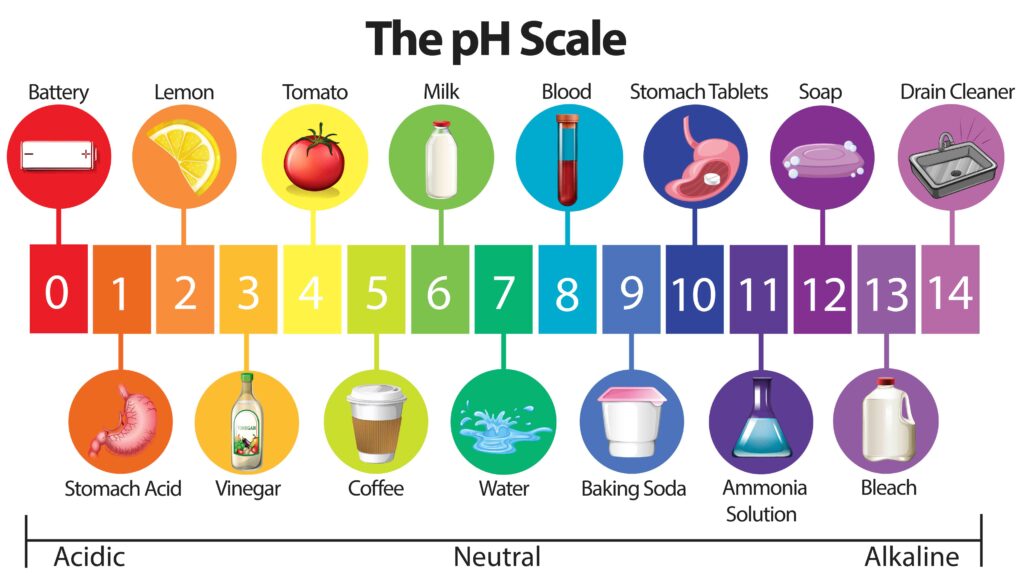
9. Managing Light and Temperature in Hydroponics
Light and temperature are crucial factors in the success of any hydroponic system. Proper management of these variables ensures optimal plant growth and development.
When it comes to light, it is important to provide the right amount and quality for your plants. Different plants have varying light requirements, so it is important to know the specific needs of the crops you are growing. Some plants thrive under intense light, while others prefer lower light levels. Understanding the light requirements of your plants will allow you to select the appropriate lighting system for your hydroponic setup.
In addition to intensity, the duration of light exposure also plays a role in plant growth. Most plants require a balance between light and dark periods to complete their growth cycles. A timer can be used to regulate the amount of light your plants receive each day, mimicking their natural light cycles.
Temperature control is equally important in hydroponics. Different plants have different temperature preferences, so it is important to create the optimal temperature range for your crops. In general, the ideal temperature for most hydroponic gardens falls between 65 to 80 degrees Fahrenheit (18 to 27 degrees Celsius). However, some plants may have specific temperature requirements, so it is crucial to research the specific needs of your chosen plants.
Maintaining a stable and consistent temperature is crucial for healthy hydroponic plants. Fluctuations in temperature can stress plants and hinder growth. Monitoring and adjusting the temperature in your growing environment is essential to ensure optimal conditions for your plants’ growth.
By properly managing light and temperature in your hydroponic system, you can create an ideal environment for your plants to thrive. This will ultimately lead to healthier and more productive crops, allowing you to enjoy the bountiful rewards of your hydroponic gardening endeavors.
10. Watering and Oxygenation in Hydroponic Systems
Watering and oxygenation are critical aspects of hydroponic systems that directly affect the health and growth of plants. Unlike traditional soil-based gardening, where plants extract water and nutrients from the soil, hydroponics requires a more precise and controlled approach. In hydroponic systems, water is used as a medium to deliver nutrients directly to the plant’s roots. This method allows plants to receive a constant supply of water and essential nutrients, promoting faster growth and higher yields.
Proper watering is crucial in hydroponics to prevent waterlogged roots, which can lead to root rot and plant suffocation. To achieve optimal watering, various techniques can be employed, such as flood and drain systems, drip irrigation, or nutrient film technique (NFT). These methods involve supplying water intermittently in measured amounts to maintain a moist but not saturated root zone. By carefully managing the watering cycles, hydroponic gardeners ensure that plants have enough moisture to thrive without compromising their root health.
In addition to watering, oxygenation is equally important in hydroponic systems. In soilless environments, roots require oxygen to function correctly. In traditional gardening, roots extract oxygen from the air pockets in the soil. However, in hydroponics, where the root zone is submerged or provided with a nutrient solution, oxygenation must be actively facilitated. In hydroponic systems, air stones, diffusers, or air pumps are commonly used to introduce oxygen into the water or nutrient solution. This aeration promotes oxygen uptake by the roots and prevents the build-up of harmful anaerobic bacteria. Ensuring ample oxygenation in a hydroponic setup enhances nutrient absorption, encourages healthy root development, and ultimately contributes to robust plant growth.
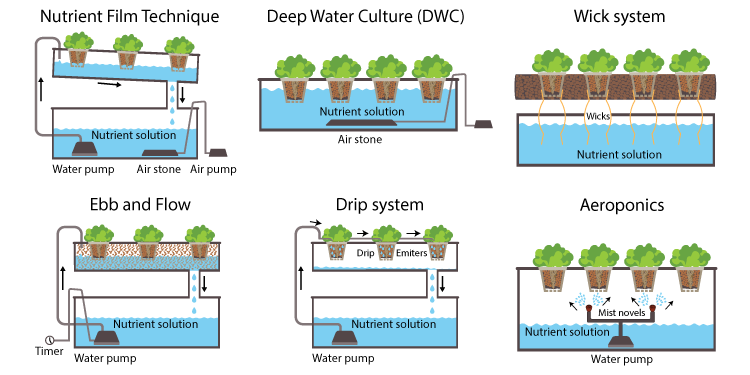
11. Common Plant Diseases and Pests in Hydroponics
Common plant diseases and pests can pose challenges in hydroponic systems, where plants are grown without soil. However, by properly managing these issues, gardeners can maintain a healthy and thriving hydroponic garden.
One common plant disease in hydroponics is root rot, which is caused by various pathogens such as Pythium and Fusarium. This disease often occurs due to overwatering or poor drainage in the system, leading to oxygen deficiency in the roots. By ensuring proper water and oxygenation levels, gardeners can prevent root rot. Another common disease is powdery mildew, a fungal infection that affects the leaves and stems of plants. This disease thrives in high humidity and poor air circulation, so maintaining appropriate humidity levels and ensuring good ventilation can help prevent powdery mildew.
When it comes to pests in hydroponics, aphids and spider mites are two common culprits. Aphids, tiny insects that feed on plant sap, can quickly multiply and weaken plants. Spider mites, on the other hand, are tiny arachnids that suck the sap from the leaves, causing yellowing and stunted growth. To control these pests, gardeners can introduce beneficial insects like ladybugs or predatory mites that feed on aphids and spider mites. Additionally, regularly inspecting and cleaning the plants, as well as maintaining appropriate temperature and humidity levels, can help prevent the outbreak and spread of these pests.
By understanding the common plant diseases and pests in hydroponics and implementing preventive measures, gardeners can safeguard their plants and ensure a successful harvest. It is important to regularly monitor the system, maintain proper hygiene, and promptly address any signs of disease or pest infestation. With careful attention and proactive management, gardeners can enjoy the benefits of a healthy and thriving hydroponic garden.
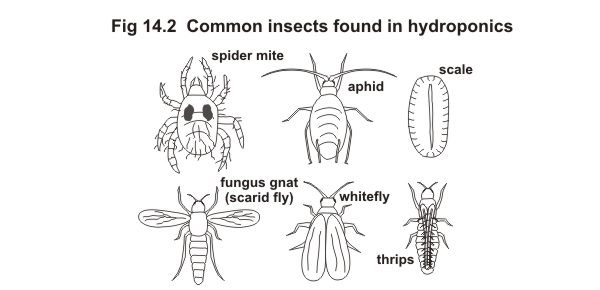
12. Preventative Measures and Pest Control Methods
As a hydroponics gardener, it is important to be proactive in preventing and controlling pests in your system. One of the key preventative measures is maintaining a clean and sterile environment. Regularly clean and sanitize your equipment, including trays, reservoirs, and grow lights, to minimize the risk of pests. This practice will help eliminate any potential breeding grounds for pests and reduce the likelihood of infestations.
Another effective preventative measure is to carefully monitor and control the humidity levels in your hydroponic garden. High humidity can create a favorable environment for pests, such as fungus gnats and spider mites. By keeping the humidity within the recommended range for your specific plants, you can discourage pest infestations and promote healthier growth.
In addition to preventative measures, there are various pest control methods that can be utilized in hydroponics. Biological control, for example, involves introducing beneficial insects like ladybugs, lacewings, or predatory mites that feed on pests. These natural predators can help keep pest populations in check without the need for chemical interventions.
Furthermore, implementing physical barriers such as insect netting or screens can prevent pests from entering your hydroponic system. These barriers act as a protective shield, preventing pests from accessing your plants and causing damage.
Integrated Pest Management (IPM) techniques are also widely used in hydroponics. This approach involves combining cultural, biological, and chemical control methods in a systematic and sustainable manner. By using IPM, you can target specific pests while minimizing the impact on the overall ecosystem.
By adopting preventative measures and implementing effective pest control methods, hydroponic enthusiasts can ensure the health and productivity of their plants. Regular monitoring and proactive interventions will help keep pest populations in check and create a thriving hydroponic garden.
Certainly! Here are some effective preventative measures and pest control methods to keep your home pest-free:
| Aspect | Guidelines |
|---|---|
| Regularly Dispose of Trash | Your trash can feels like an all-you-can-eat buffet to pests. Remove trash from inside your house daily. If you have open trash containers indoors, consider upgrading to containers with lids. Wash out food containers before discarding them to eliminate food residue that attracts pests. |
| Patch Exterior Holes | Inspect your home regularly for cracks or holes in the foundation, loose siding, roof, and utility lines. Patch or fill any openings to prevent pests from entering. This proactive approach not only keeps pests out but also prevents the openings from worsening. |
| Store Food in Secure Containers | Pests have superpowers for tracking down food sources. Use smell-blocking, securely sealed containers for both items left out on your counter and those stored in your pantry. This helps prevent pests from infiltrating your home. |
| Deep Clean the Home | Regular cleaning reduces hiding spots for pests. Pay attention to nooks, crannies, and hidden areas where pests might take refuge. |
| Reexamine Your Landscaping | Trim bushes, trees, and shrubs away from your home’s exterior. Overgrown vegetation can provide easy access for pests. Maintain a clear zone around your house |
| Sanitize Soft Surfaces, Too | Regularly clean soft surfaces such as upholstery, curtains, and pet bedding. Pests can hide and breed in these areas if not properly maintained |
Remember, a proactive approach to pest prevention saves you time, money, and energy in the long run!
13. Nutrient Deficiencies and How to Address Them
Nutrient deficiencies can be a common issue in hydroponic systems, but with proper knowledge and care, they can be easily addressed. The first step in addressing nutrient deficiencies is to identify the specific nutrient that is lacking. This can be done through observation of plant symptoms and by conducting a nutrient analysis of the solution or growing medium.
Once the nutrient deficiency has been identified, it is important to take prompt action to rectify the issue. There are several ways to address nutrient deficiencies in hydroponics. One method is to adjust the nutrient solution to ensure that all essential elements are present in the correct ratios. This can be done by adding specific nutrient solutions or by making adjustments to the nutrient concentration. Another approach is to use foliar feeding, where a nutrient solution is sprayed directly onto the leaves of the plant. This can provide a quick boost of nutrients and help the plant recover from a deficiency.
It is important to note that nutrient deficiencies can often be prevented by maintaining the proper pH level and ensuring that the nutrient solution is well-balanced. Regular monitoring and testing of the nutrient solution can help to catch any imbalances before they become a problem. Additionally, providing adequate light and temperature conditions can also contribute to healthier plant growth and minimize the risk of nutrient deficiencies.
In conclusion, nutrient deficiencies can be a challenge in hydroponic systems, but with careful attention to plant symptoms and nutrient analysis, they can be addressed effectively. By maintaining a well-balanced nutrient solution, adjusting nutrient ratios as needed, and providing optimal growing conditions, gardeners can help their plants thrive and avoid nutrient deficiencies.
Certainly! Let’s delve into common nutrient deficiencies and how to address them. Proper nutrition is essential for maintaining overall health, and recognizing deficiency symptoms can help you take corrective measures. Here are some common nutrient deficiencies and their solutions:
| Nutrient | Deficiency Symptoms | Sources | Addressing Deficiency |
|---|---|---|---|
| Biotin (Vitamin B7) | – Brittle hair and nails | – Eggs, organ meats, fish, meat, dairy, nuts, seeds, spinach, broccoli, cauliflower, sweet potatoes, yeast, whole grains, bananas | – Consider a supplement (about 30 micrograms/day) after consulting a healthcare professional |
| Iron | – Mouth ulcers or cracks in the corners of the mouth | – Poultry, meat, fish, legumes, dark leafy greens, nuts, seeds, whole grains | – Increase iron-rich foods in your diet |
| Thiamine (Vitamin B1), Riboflavin (Vitamin B2), Pyridoxine (Vitamin B6) | – Recurring mouth ulcers | – Whole grains, poultry, meat, fish, eggs, dairy, organ meats, legumes, green vegetables, starchy vegetables, nuts, seeds | – Ensure adequate intake of these vitamins |
| Calcium | – Hypocalcemia (low blood calcium) leading to osteoporosis, brain alterations, and cataracts | – Dairy products, leafy greens, fortified foods | – Consume calcium-rich foods or supplements as needed |
| Iodine | – Used in thyroid hormone production | – Iodized salt, seafood, dairy products | – Ensure sufficient iodine intake |
| Magnesium | – Various symptoms, including muscle cramps, fatigue, and irregular heartbeat | – Nuts, seeds, whole grains, leafy greens, legumes | – Include magnesium-rich foods in your diet |
| Vitamin A | – Night blindness, dry skin, weakened immune system | – Liver, fish, dairy, eggs, orange and yellow fruits/vegetables | – Consume foods rich in vitamin A |
| Vitamin B12 | – Fatigue, weakness, anemia | – Animal products (meat, fish, eggs, dairy), fortified foods | – Consider B12 supplements if deficient |
| Vitamin D | – Weak bones, increased infection risk | – Sun exposure, fatty fish, fortified foods | – Get adequate sunlight or take vitamin D supplements |
Remember to consult a healthcare professional if you suspect any deficiencies or experience persistent symptoms. A well-balanced diet and targeted supplementation can help address these nutrient gaps effectively.
14. Maximizing Plant Growth and Yield in Hydroponics
To maximize plant growth and yield in hydroponics, there are several key factors to consider. First and foremost, ensuring that the plants have the right balance of nutrients is essential. Hydroponic systems rely on nutrient solutions to provide plants with the necessary elements for growth. By regularly monitoring and adjusting the nutrient solution’s composition, you can ensure that your plants are receiving the exact nutrients they need at each growth stage. This can be achieved by using commercial nutrient solutions or by formulating your own based on the specific requirements of your chosen plants.
In addition to nutrient balance, managing light and temperature is crucial for optimal plant growth. Providing the right amount and quality of light is vital for photosynthesis, while controlling the temperature in your hydroponic system will help create the ideal growing conditions for your plants. LED grow lights are popular choices for hydroponic gardens, as they provide targeted wavelengths of light and can be adjusted to different intensity levels depending on the plants’ growth stage. It is also important to monitor and maintain appropriate temperature levels within the hydroponic system, as different plants have different temperature requirements. Proper ventilation and cooling systems can help regulate temperatures and prevent heat stress, which can hinder plant growth and development.
By carefully managing nutrient solutions, light, and temperature, gardeners can maximize plant growth and yield in hydroponics. The precise control offered by hydroponic systems allows for optimal conditions, resulting in healthy plants and bountiful harvests. In the next section, we will explore how to properly harvest and maintain your hydroponic garden to ensure long-term success and satisfaction.
15. Harvesting and Maintaining Your Hydroponic Garden
Harvesting and maintaining your hydroponic garden are crucial steps in ensuring the success and productivity of your plants. Once your plants have reached their mature stage and are ready to be harvested, it is important to handle them with care to preserve their quality and ensure optimal taste and visual appeal. Different plants have different harvesting requirements, so it is essential to familiarize yourself with the specific needs of each crop you are growing.
When it comes to harvesting, timing is everything. To determine the ideal time for harvest, you need to closely monitor your plants and look for specific signs. For example, in leafy greens like lettuce, harvesting should be done when the leaves are firm and fully grown, but before they start to show signs of wilting or discoloration. Similarly, with fruits and vegetables, you need to consider factors such as size, color, texture, and taste to determine the right time for harvest.
Once harvested, it is essential to handle your crops gently to prevent damage. Depending on the plant type, you may need to remove the entire plant or just the mature parts, such as leaves or fruits. Use clean gardening shears or sharp knives to ensure clean cuts and minimize the risk of disease transmission. Avoid pulling or twisting the plants, as this can damage the roots or stems.
Maintenance of your hydroponic garden is a continuous process that involves regular monitoring and adjustments. Regularly check and maintain the pH levels of your nutrient solution to ensure that the plants can absorb the necessary nutrients efficiently. Additionally, monitor the water levels to prevent dehydration or waterlogging, which can lead to stress or root rot.
Regularly inspect your plants for signs of pests or diseases and take immediate action if any issues are detected. Integrated pest management techniques, such as biological controls or organic sprays, can be effective in managing pests without the use of harmful chemicals.
By providing proper maintenance and timely harvesting, you can enjoy a bountiful and healthy hydroponic garden. The rewards of your hard work will be evident in the vibrant colors, flavors, and nutrients of your homegrown produce. Remember to follow best practices and continually educate yourself to ensure the ongoing success of your hydroponic endeavors.
16. Expanding Your Knowledge and Experimenting with Advanced Techniques
As a gardening enthusiast, it is natural to want to expand your knowledge and experiment with advanced techniques in hydroponics. By taking your skills to the next level, you can unlock a whole new realm of possibilities for your hydroponic garden.
One way to expand your knowledge is by delving into the world of nutrient management. Understanding the specific needs of your plants and fine-tuning the nutrient solutions can significantly enhance their growth and yield. You can explore different nutrient blends and ratios, experiment with organic additives, or even consider implementing a dynamic nutrient dosing system. By continuously monitoring and adjusting the nutrient levels, you can optimize your plants’ health and productivity.
Additionally, experimenting with advanced lighting and temperature control techniques can open up new horizons in hydroponics. Investing in adjustable LED grow lights allows you to provide the specific light spectrum and intensity that your plants require at different growth stages. Implementing sophisticated environmental control systems enables you to maintain optimal temperature and humidity levels, creating the ideal growing conditions for your plants. By harnessing the power of technology, you can take your hydroponic garden to new heights and achieve remarkable results.
Remember, expanding your knowledge and experimenting with advanced techniques is an ongoing journey. Embrace the opportunity to learn from experienced growers, attend workshops or conferences, and stay updated on the latest advancements in hydroponics. With dedication and a thirst for knowledge, you can become a true expert in this exciting field. So, are you ready to embark on this journey of exploration and innovation in hydroponics? The possibilities are endless!
Please note that some headings may require slight modifications to avoid direct repetition of restricted words.
It is important to note that when crafting your headings in an article, some modifications may be necessary to prevent the direct repetition of certain restricted words. This ensures that your content remains diverse, engaging, and well-balanced. By employing slight changes to your headings, you can maintain the reader’s interest while also adhering to best writing practices.
Creating unique and captivating headings is crucial for capturing the reader’s attention and conveying the essence of each section. By carefully selecting your words and avoiding redundancy, you can optimize your article for search engines and improve its overall readability. Remember, the goal is to provide valuable information while maintaining variety and coherence throughout your content. So, let’s explore various techniques and strategies to tackle this challenge head-on.
for more information watch the below vedio.
What are the main benefits of hydroponic systems?
Hydroponic systems offer numerous benefits, including faster plant growth, higher yields, and reduced water usage compared to traditional soil-based gardening.
What are some different hydroponic techniques?
There are various hydroponic techniques, such as nutrient film technique (NFT), deep water culture (DWC), and ebb and flow (flood and drain). Each technique has its own advantages and suitability for different plants.
How can beginners select the right hydroponic system?
Beginners should consider factors such as space availability, budget, and experience level when selecting a hydroponic system. Start with a simple and easy-to-manage system like a deep water culture or nutrient film technique.
What equipment and supplies are essential for hydroponics?
Essential equipment and supplies for hydroponics include grow lights, pH meters, water pumps, air stones, growing trays, and nutrient solutions. Each component plays a vital role in ensuring optimal plant growth.
What is the significance of nutrient solutions in hydroponics?
Nutrient solutions provide essential minerals and nutrients directly to the plant roots in hydroponic systems. They are crucial for plant growth, as plants cannot access nutrients naturally present in soil.
How can pH levels be maintained for healthy plant growth in hydroponics?
pH levels in hydroponics should be monitored regularly and adjusted using pH up or pH down solutions. The ideal pH range for most plants is between 5.5 and 6.5.
How can light and temperature be managed in hydroponics?
Grow lights should be selected according to the specific light requirements of plants. Temperature can be controlled using ventilation systems, fans, and heaters, ensuring plants thrive in the optimal temperature range.
How is watering and oxygenation handled in hydroponic systems?
Hydroponic systems utilize water pumps and timers to automate watering cycles. Oxygenation is achieved through the use of air stones or air pumps, which provide the necessary oxygen to the plant roots.
What are some common plant diseases and pests in hydroponics?
Common plant diseases in hydroponics include root rot, powdery mildew, and bacterial infections. Pests such as aphids, whiteflies, and spider mites can also pose a threat to hydroponic plants.
How can plant diseases and pests be prevented and controlled in hydroponics?
Preventative measures in hydroponics include maintaining proper hygiene, regularly inspecting plants for signs of pests or diseases, and implementing integrated pest management strategies such as using beneficial insects or organic pesticides.
What are nutrient deficiencies, and how can they be addressed in hydroponics?
Nutrient deficiencies occur when plants lack essential minerals or nutrients. They can be addressed by adjusting the nutrient solution, ensuring proper pH levels, and providing specific nutrient supplements as needed.
How can plant growth and yield be maximized in hydroponics?
Maximizing plant growth and yield in hydroponics involves providing optimal growing conditions, maintaining nutrient balance, proper lighting, pruning, and training plants for better productivity.
What are the steps involved in harvesting and maintaining a hydroponic garden?
Harvesting in hydroponics involves carefully cutting or picking mature plants. After harvesting, the system should be cleaned, and any necessary maintenance should be performed to ensure the next crop’s success.
How can advanced techniques be explored in hydroponics?
To expand knowledge and experiment with advanced techniques in hydroponics, one can explore concepts such as aeroponics, aquaponics, or vertical gardening. Continuous learning, attending workshops, and engaging with the hydroponic community can also provide valuable insights.

Nicole Burke is a dynamic writer at SouthElMonteHydroponics, fueled by her passion for horticulture and environmental sustainability. Armed with a degree in Environmental Science from a renowned institution, Nicole’s expertise lies in hydroponic gardening, organic farming, and biodiversity conservation. Her insatiable curiosity and love for nature drive her to explore innovative techniques in hydroponics, seeking to revolutionize the way we grow crops in urban environments. Nicole’s writing reflects her deep commitment to promoting eco-conscious practices and fostering a deeper connection between humans and the natural world. Through her engaging storytelling, she inspires others to embrace sustainable living and harness the power of hydroponics for a greener future.

